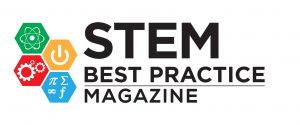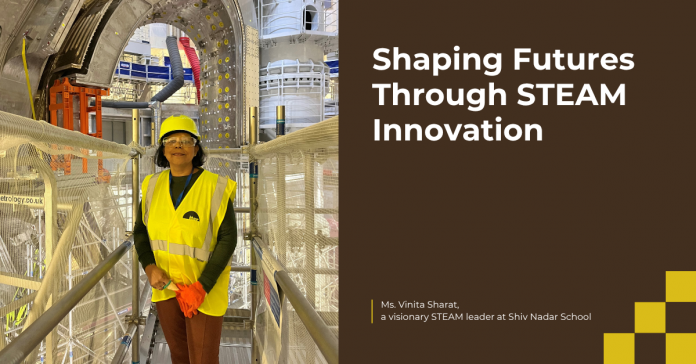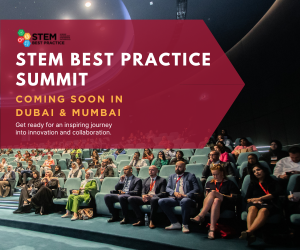Empowering young minds: Ms. Vinita’s journey of passion, purpose, and STEAM leadership
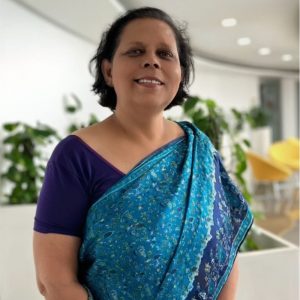 A passionate STEAM leader with over 30 years of experience in the education sector, Vinita Sharat is dedicated to creating transformative learning experiences. As the Head of STEAM and Science Outreach Shiv Nadar School , she consistently champions innovative opportunities that go beyond the classroom. She also serves as a Senior Education Consultant with NGOs like the Indian Youth Nuclear Scientist (IYNS) and the Life Lab Education and Research Foundation.
A passionate STEAM leader with over 30 years of experience in the education sector, Vinita Sharat is dedicated to creating transformative learning experiences. As the Head of STEAM and Science Outreach Shiv Nadar School , she consistently champions innovative opportunities that go beyond the classroom. She also serves as a Senior Education Consultant with NGOs like the Indian Youth Nuclear Scientist (IYNS) and the Life Lab Education and Research Foundation.
Vinita strongly believes in opening up new frontiers in STEAM for both teachers and students. Her commitment to hands-on, real-world learning has enabled students to participate in prestigious global programs—including internships at ITER (France) and workshops at CERN (Geneva)—nurturing curiosity and excellence beyond the confines of the syllabus.
Learning beyond the curriculum has empowered students to think critically, collaborate globally, and apply scientific inquiry to real-world challenges. It nurtures lifelong learners who are not only academically capable but also future-ready.
1. As a school leader, what key experiences have shaped your leadership style and the way you guide your school community?
What worked well in shaping up STEAM in my school community: A clear vision and effective communication with the team were essential for engaging students in STEAM activities. I gave the team the freedom to think creatively and contribute their ideas, which was crucial for the program’s success. We also believe in giving students agency a sense of responsibility when deciding on projects. Their ideas are often unconventional, offering fresh perspectives that we as educators may not have considered. This created a win-win situation for both learners and educators, and involving students truly empowered them to make strategic decisions on project deliverables.
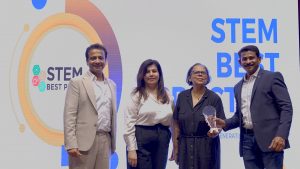 Mentorship and Skill Development: I focused on nurturing each team member’s unique strengths and provided opportunities for professional development related to STEAM education. By investing in our team, we created a group of highly skilled and passionate educators who were better equipped to inspire our students.
Mentorship and Skill Development: I focused on nurturing each team member’s unique strengths and provided opportunities for professional development related to STEAM education. By investing in our team, we created a group of highly skilled and passionate educators who were better equipped to inspire our students.
Celebrating Achievements: I made it a priority to acknowledge and celebrate both small and large successes. Whether it was a student’s breakthrough on a difficult problem or a team member’s innovative teaching method, recognizing these achievements fostered a positive and motivating environment that encouraged continuous growth and creativity.
2. What is your vision for the future of education in India and globally?
I believe that a full year of curriculum in both middle and high school should be dedicated to Environmental and Sustainability Studies. As a result of humanity’s accelerated consumption of our natural resources—air, water, and land—we are facing an imminent threat to life on our planet. This urgent concern must be addressed proactively, as it impacts every level of our existence, from local communities to the global ecosystem.
3. How do you integrate innovation into traditional education models to ensure students are future-ready?
Connect every subject concept to the outside world, allowing students to explore the history of science, math, and other subjects. The integration of modern technical innovations with traditional teaching methods should begin in primary school. A correct balance of methodologies is essential; innovation should build upon traditional methods, not completely eradicate them.
Example :
Traditional Method: A primary school teacher shows students a chart with the multiplication tables from 1 to 10. Students are asked to memorize the tables and recite them aloud.
Innovative Integration: The teacher still introduces the concept of multiplication and uses the traditional charts. However, to make the lesson more engaging and connect it to the real world, the teacher uses a tablet application. Students can play a game where they solve multiplication problems to “build” a virtual house or “grow” a garden. This combines the foundational knowledge (memorization) with an interactive, technology-driven approach, making the learning process more fun and relatable.
4. What role do you believe experiential learning and STEM play in shaping today’s learners, and how have you implemented that in your schools?
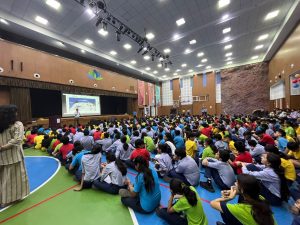 In my workplace, I have implemented a holistic approach to embed experiential learning and STEM into the curriculum from the primary level onward.
In my workplace, I have implemented a holistic approach to embed experiential learning and STEM into the curriculum from the primary level onward.
Project-Based Learning: We have tried to slightly change the traditional model of chalk and board learning. For example, in middle school, a science unit on climate change culminates in a project where students design and build a small-scale model of a renewable energy system. They must apply principles of physics, math, and engineering while also considering the economic and social implications, which they then present to a panel of community experts.
Interdisciplinary Integration: We deliberately break down the silos between subjects. For instance, a history lesson on ancient civilizations might be combined with a technology project where students use 3D modeling software to recreate a historical monument. This shows them how science, technology, engineering, art, and math are all interconnected in the real world.
Building a Culture of Exploration: We are creating makerspaces and innovation labs where students have access to tools like 3D printers, laser cutters, robotics kits, and coding software. These spaces are not just for a specific class but are open for students to explore their own ideas during free periods, encouraging self-directed and independent learning.
Community Partnerships: We’ve forged strong partnerships with local tech companies and universities in Grades 5 to 12 specially. This allows for guest lectures, mentorship programs, and field trips that expose students to real-world applications of their learning. It bridges the gap between the classroom and potential career pathways, showing them that the skills they are building have a direct and tangible value.
5. How can the education community collaborate better to share best practices and scale innovation?
We should partner and collaborate with other Education Communities to bring the best opportunities to our young minds.
For example, in STEAM Education we have partnered with Life lab foundation through which our students got access to CERN ( Geneva) for a week long master class, ITER ( Aix-n France) for getting internship and guest lectures, IUCAA ( Pune) for Cosmic Quest. To understand the planets and Sun we partnered with Star scape and with their help made an observatory.

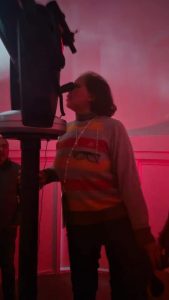
6. What advice do you give to young educators or aspiring school leaders who want to make a meaningful impact?
Connecting classroom knowledge to the outside world is crucial for deep learning. The true test of understanding a concept is whether you can apply it to comprehend and solve real-world problems. This often requires going beyond the boundaries of the traditional syllabus.
